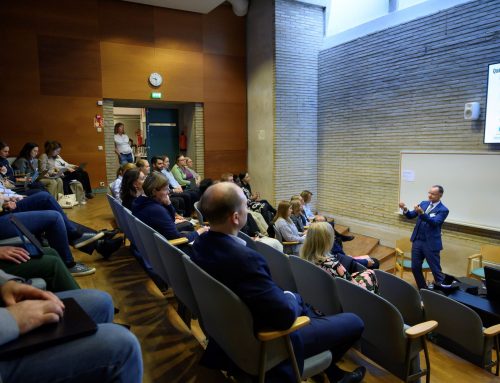If the new Israel-Hamas deal holds and their ceasefire begins on Sunday, the first stage includes a commitment to allow more humanitarian aid into the besieged territory. Announcing the deal to the US public, the outgoing president Joe Biden said the deal would “surge much-needed humanitarian assistance to Palestinian civilians”.
And not before time – the humanitarian situation in Gaza is now catastrophic. Since late 2024, humanitarian organisations have warned of an imminent famine due to the severely restricted commercial and humanitarian food supply flows. There is little healthcare provision. Hospitals are destroyed, medical supplies depleted and healthcare workers overwhelmed.
The agreed influx of 600 trucks per day is much needed, but there are many hurdles to overcome. As UN agencies and humanitarian organisations prepare to scale up their operations, here are seven issues they will face.
1. Access
In the first two weeks of 2025, there was only one day when more than 100 trucks of supplies crossed into Gaza. Humanitarian organisations see access restrictions as the main reason for the limited flow of aid. For a “surge” to happen, better access to Gaza is essential.
There are physical access constraints. Only a few border crossings are open. They operate at limited capacity as procedures of scanning and transferring cargo can be slow and cumbersome. Access to the north of Gaza has been especially difficult. The deal allows access to the north but does not permit movement between north and south.
There are also bureaucratic hurdles. Obtaining permits and approvals from Israeli authorities takes time. Even with the correct paperwork, shipments are frequently turned back at the border in what many feel is an arbitrary manner.
One hope is that the Rafah border crossing to Egypt, closed since being taken over by Israeli forces in May 2024 could be reopened. Work is reportedly underway to repair and reopen the crossing. In stage one, no cargo traffic is expected to be permitted, but it is unclear how Rafah will be used at this stage.
2. International humanitarian law
Civilians and humanitarian workers are protected under international humanitarian law. But in Gaza, Israel has frequently hit areas it designated as humanitarian zones for civilians to stay safe.
Well over 300 aid workers have been killed in Gaza during this conflict. This constant danger hampers humanitarian operations.
In April 2024, seven workers of the charity World Central Kitchen were killed, when Israel attacked their convoy from the air. Earlier, Israeli forces killed over 100 people who had gathered to collect flour. International humanitarian law has to be respected to enable organisations to distribute aid and make it safe for those in need to receive it.
3. Law and order
Lawlessness is a big concern. Public order is breaking down as Hamas authorities cannot prevent desperate people from looting food supplies. Violent gangs are targeting humanitarian convoys. Aid agencies have even paused their deliveries through certain border crossings in response to their trucks being looted.
US secretary of state, Antony Blinken, has proposed an international security force of troops and police to stabilise post-war Gaza. At this stage, such a plan is not part of the ceasefire agreement.
Ensuring the wide availability of commercial and humanitarian goods should discourage looting, but to enable humanitarian assistance to reach those in need there has to be a plan to restore law and order in Gaza.
4. Fuel
The deal requires 600 aid trucks per day to be allowed into Gaza, including 50 carrying fuel. This is important to allow the aid to be brought in from border crossings and enable its distribution.
Fuel shortages have a particularly serious impact on healthcare and sanitation. Much of the power in Gaza is now provided by diesel generators. In hospitals, essential equipment like ventilators rely on adequate supplies of fuel. Fuel is also necessary to operate sewage and fresh water networks. Water-borne diseases are already a concern and fuel shortages exacerbate these problems.
Households have very limited access to fuel for cooking and heating. Assessments show that many families have gone from cooking with gas to buying firewood, to scavenging wood – and now to burning solid waste such as plastic.
5. Local capacity
Outside aid is not a sustainable way forward for Gaza. Increasingly, humanitarians embrace localisation, empowering local responders and strengthening local capacity to promote long-term sustainability.
Unrwa (the United Nations Relief and Works Agency) is the largest UN organisation in Gaza. Its large local workforce makes it a key player in the humanitarian response.
However, Israeli laws due to come into effect at the end of January will ban contact between Unrwa and Israeli authorities. This will make it impossible to negotiate safe movement. Details released so far do not clarify Unrwa’s position under the ceasefire deal.
Local capacity building should enable and expand local food production and selling. Gaza currently produces little food. As of March 2024, 40% of land previously used for food production had been destroyed.
With many fishing boats destroyed and fishers being targeted offshore, this source of food has also been diminished. Many shops are unable to restock.
6. Infrastructure
The destruction of infrastructure is hindering the distribution of aid. More than two-thirds of the road network has been damaged.
Given the amount of goods supposed to enter per day, warehouses are important. In December, only 25% of humanitarian warehouses in Gaza were operational, with the majority damaged or destroyed. Bringing in mobile warehouses is necessary to help facilitate the expected influx of aid.
It will take many years to clear the millions of tons of rubble left behind from this war. The road network needs to be repaired to enable the flow of goods and people.
Before any of this can happen, unexploded ordnance and explosives need to be cleared. All movements of people and goods will be at risk of death and injury from these remnants of war for the foreseeable future.
7. Sustained peace
To be able to address these issues, a sustained peace is vital. There will be no quick solutions to alleviate the suffering of the people of Gaza.
Humanitarians are ready to provide immediate assistance as soon as possible. But they face a very challenging environment and their operations can only be successful if the ceasefire holds.
Writer:
Sarah Schiffling, Deputy Director of the HUMLOG (Humanitarian Logistics and Supply Chain Management Research) Institute, Hanken School of Economics
The text was originally published in The Conversation 16 January 2025.




